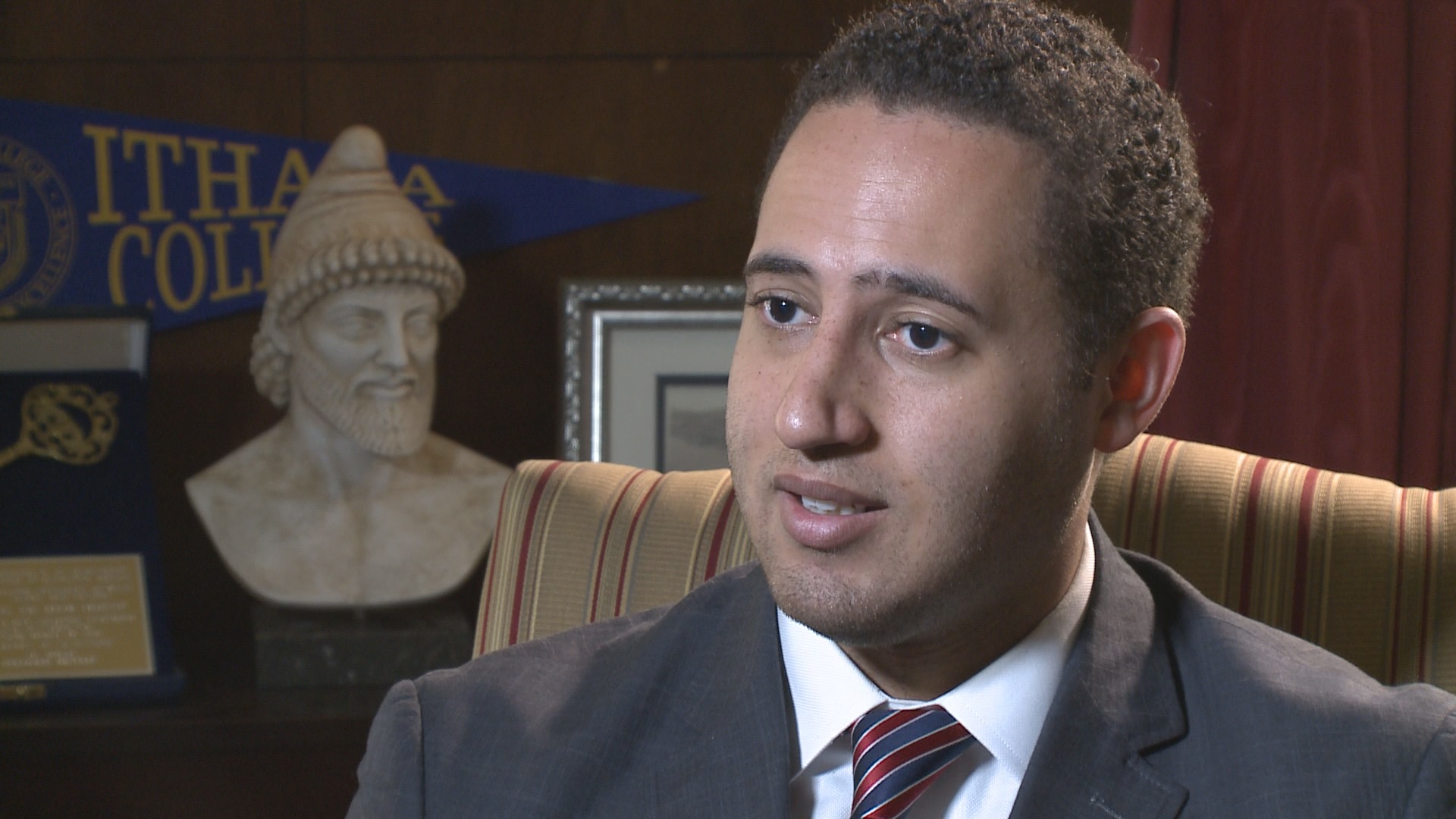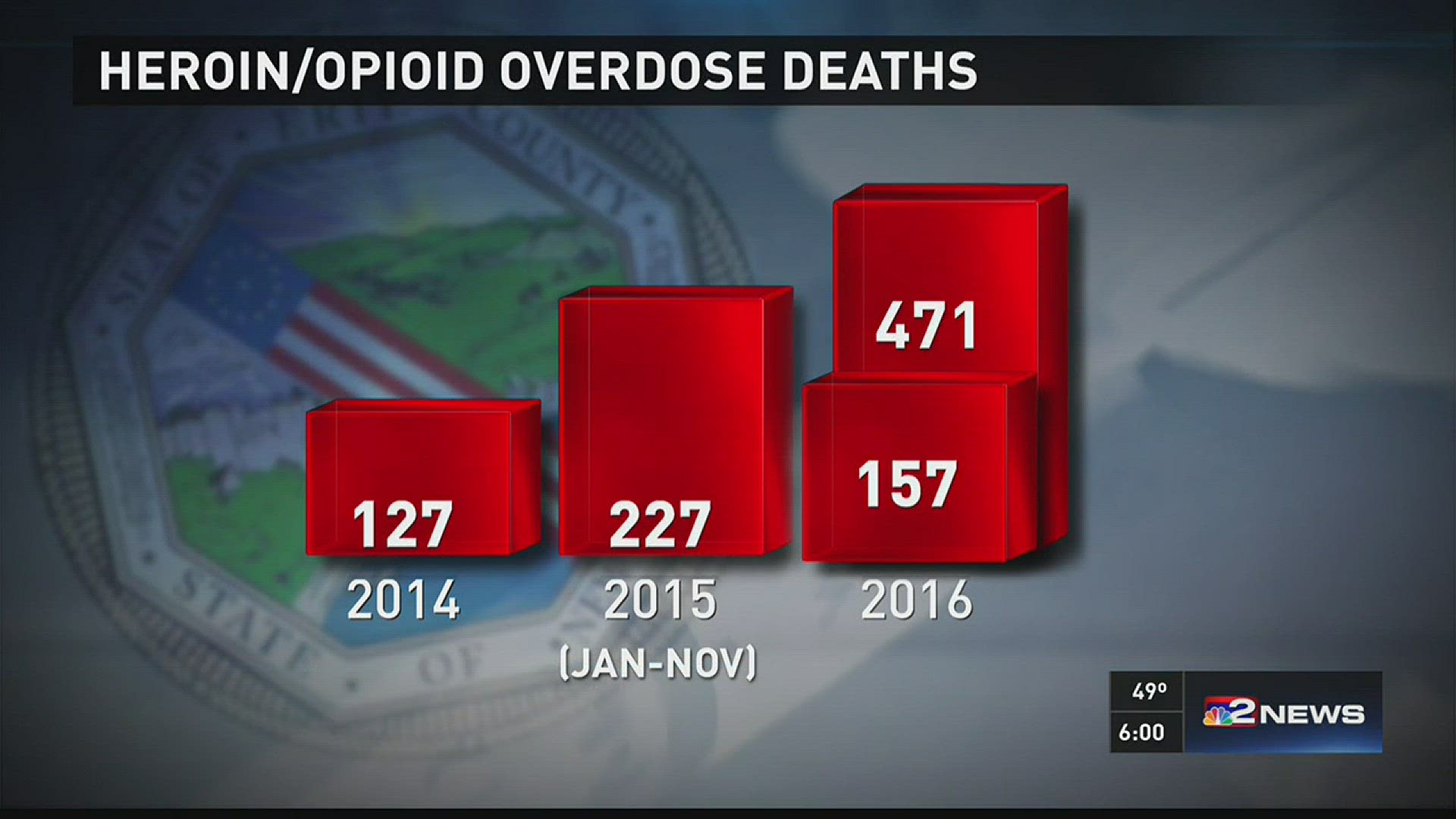ITHACA, NY - Svante Myrick is a young and impatient man. At age 29, he is in his second term as Mayor of Ithaca. And like so many communities across the country, people in his city were dying of drug overdoses. The culprits, heroin and other powerfully addicting opiates.
“The federal government wasn’t on the job. The state government had no answers and we were losing people in Ithaca every month,” said Myrick.
Myrick is especially critical of Washington saying, “Usually a problem has to punch ‘em in the face before they notice it and are able to take action about it. And, usually, they’re not the most innovative."
Not seeing a solution out there to stop the heroin epidemic in his own city, Myrick set out to craft one. Over two years, a group of 45 people -- treatment specialists, doctors, members of law enforcement and others -- worked on a comprehensive strategy to save the lives they were losing every month to opiate overdoses.

The result was "The Ithaca Plan," a 58-page document which addresses the heroin problem with a very comprehensive approach. It includes housing, education, job training and a revamping of the criminal justice system.
But one facet of the report, and easily the most controversial part of the plan, is the call for government-approved sites for drug users to shoot-up safely. They are called safe injection sites (SIS).
Myrick explains, “Safe injection works.”
The only SIS in North America is on the east side of Vancouver, Canada. It has been operating for 13 years.
Users sit in cubicles lining the wall. If they need a clean needle, they are given one. Health professional monitor the users. If one overdoses, there is Narcan available to revive them.
“Two-million injections at that site. Zero overdose deaths,” notes Myrick, “and that’s just inside the facility. In a 16-block radius, overdose deaths went down 35 percent.”
The Vancouver SIS is called InSite and is operated by Vancouver Coastal Health. It exists thanks to exemptions in Canadian drug laws. There are proposals to open SIS’s in other cities, including Toronto.
Myrick thinks it’s time to import this idea to the US as a way to reduce overdose deaths.
Already, Manhattan Democrat Linda Rosenthal, chair of the State Assembly Committee on Alcoholism and Drug Addiction, has promised to submit legislation to make SIS legal in New York.
Horizon Health President and CEO Ann Constantino, who leads the largest addiction treatment provider in Western New York, also likes the idea. “It is out of the box. It is controversial. We have to do something different. We’re losing more people every month, every year.”
But Erie County Health Commissioner Dr. Gale Burstein says a SIS is a desperate move which is wrong and expensive. “These are $2 million dollars a year to maintain. Just think what we could do with that money. I would want to spend that money on preventing addiction or treating addiction in the first place," she said.
Jodie Atlman, campus director for Renaissance House, says considering a SIS is to consider surrender: “We’re waving the white flag saying, ‘You win heroin. Here we go.’ “
Myrick says to implement all of The Ithaca Plan, including SIS’s, would cost “millions not thousands.” And that would be just in his city.
“Nobody begins using opiates because they think it’s going to end well. Nobody begins using heroin because they think it’s safe. They begin using drugs because they’re in pain,” said Myrick.
And the Ithaca mayor says the size of heroin and opiate addiction problem requires elected leaders to do something because the emergency is now.

